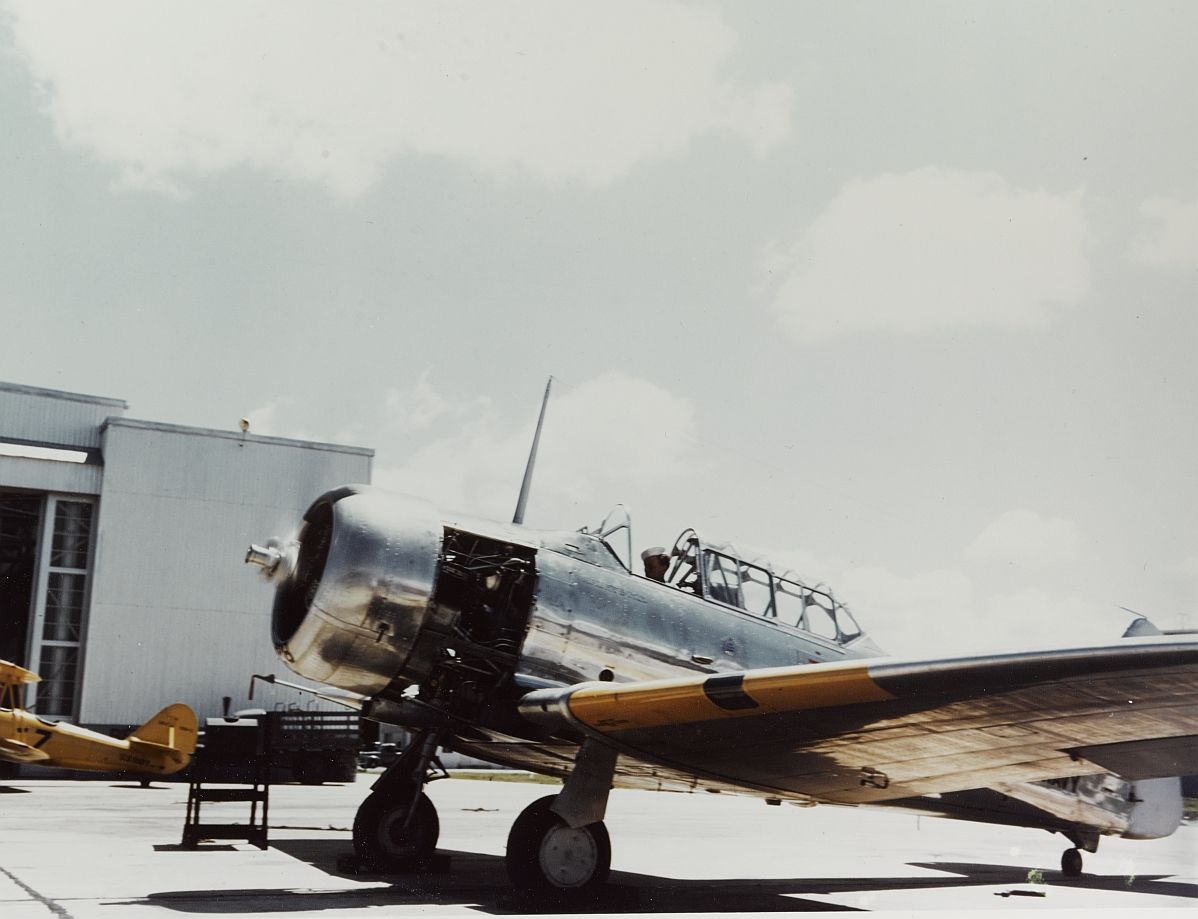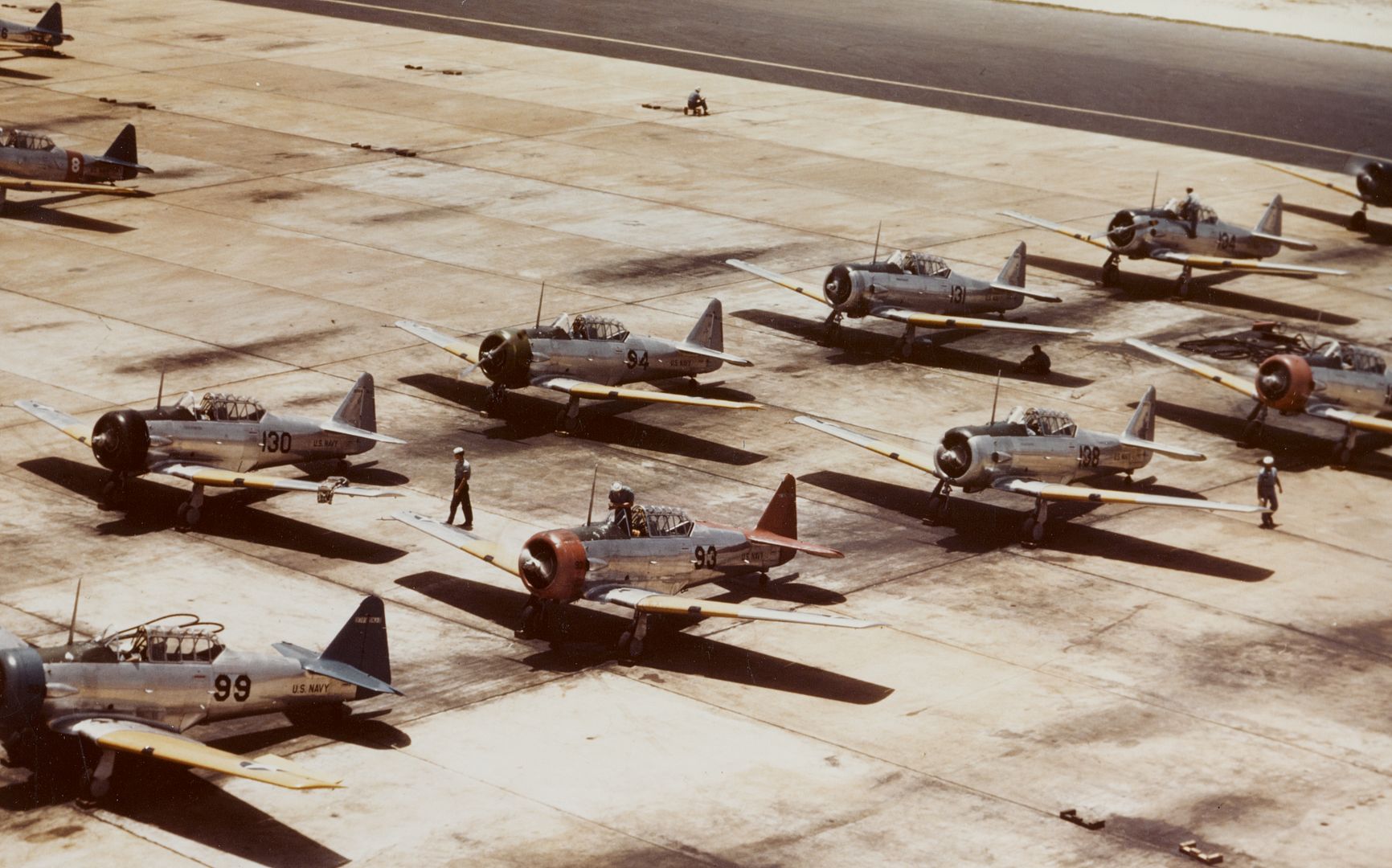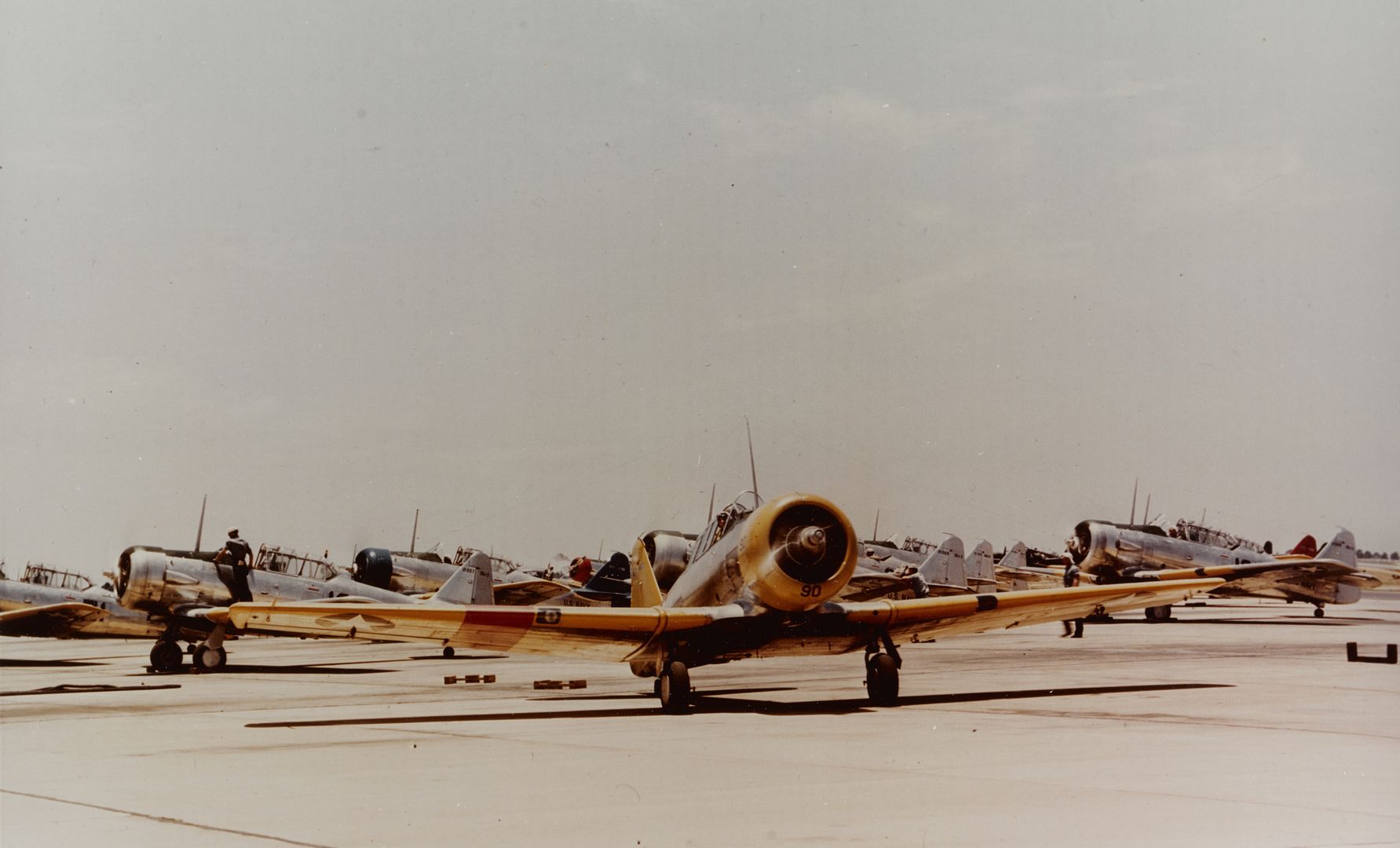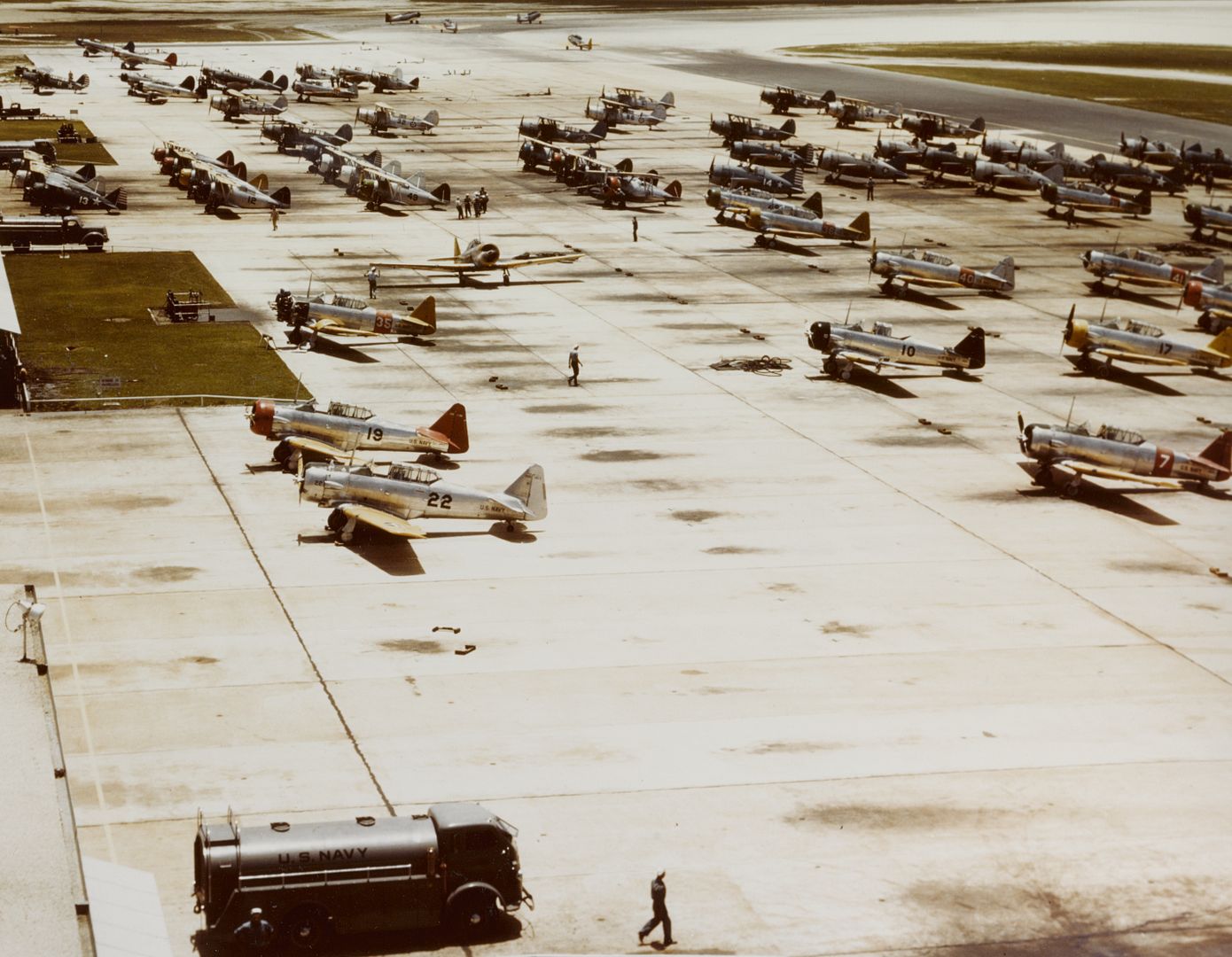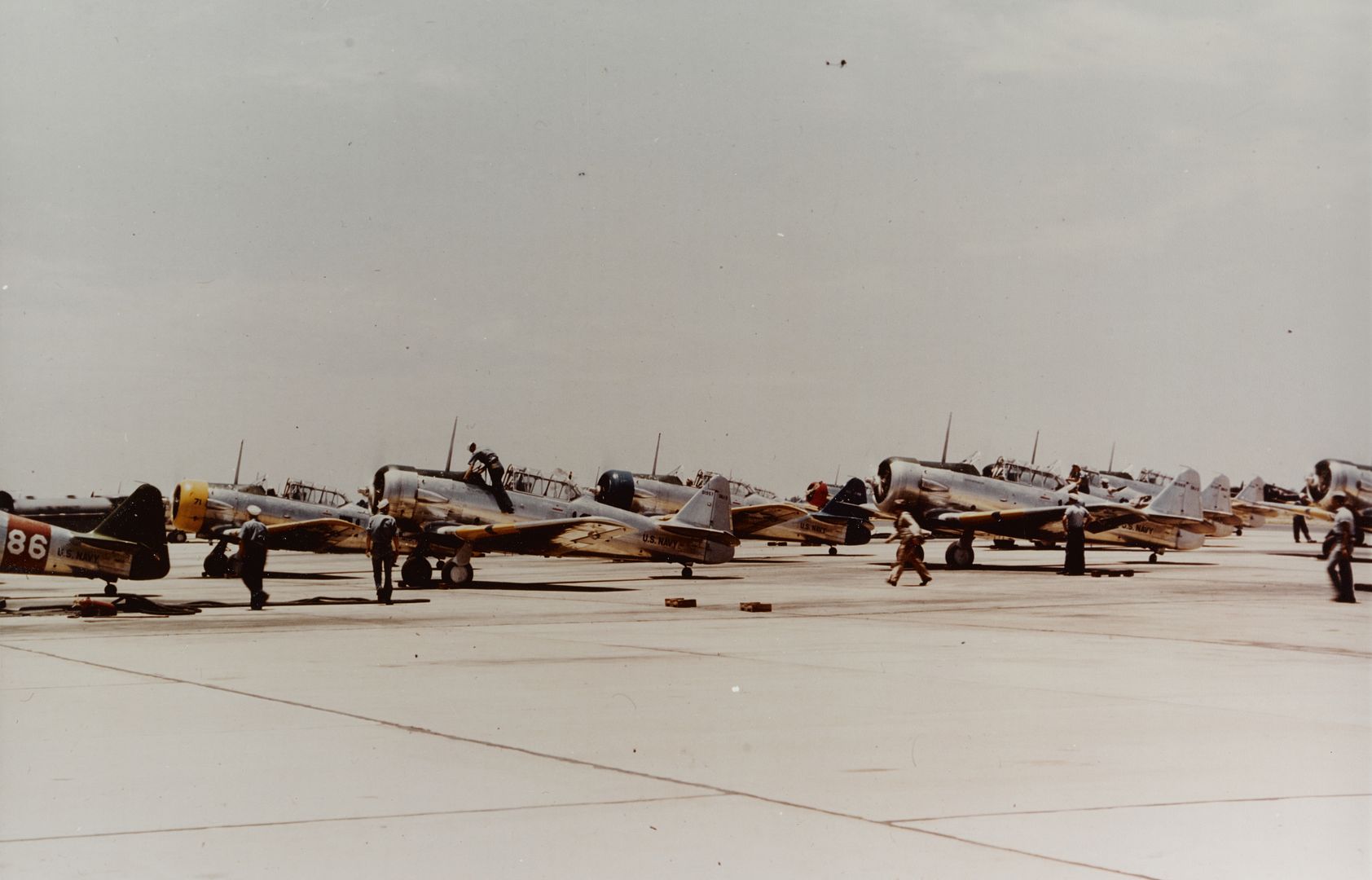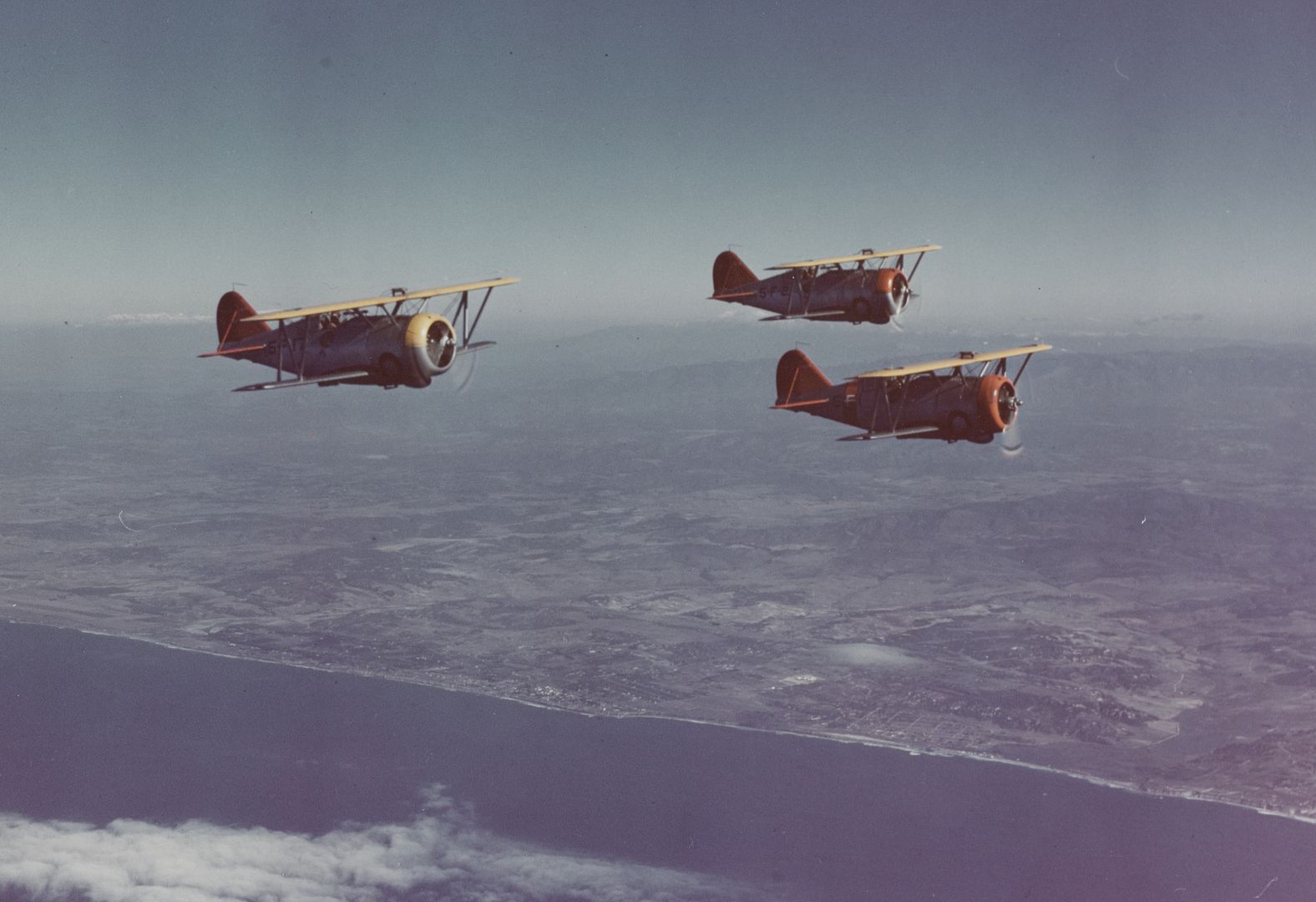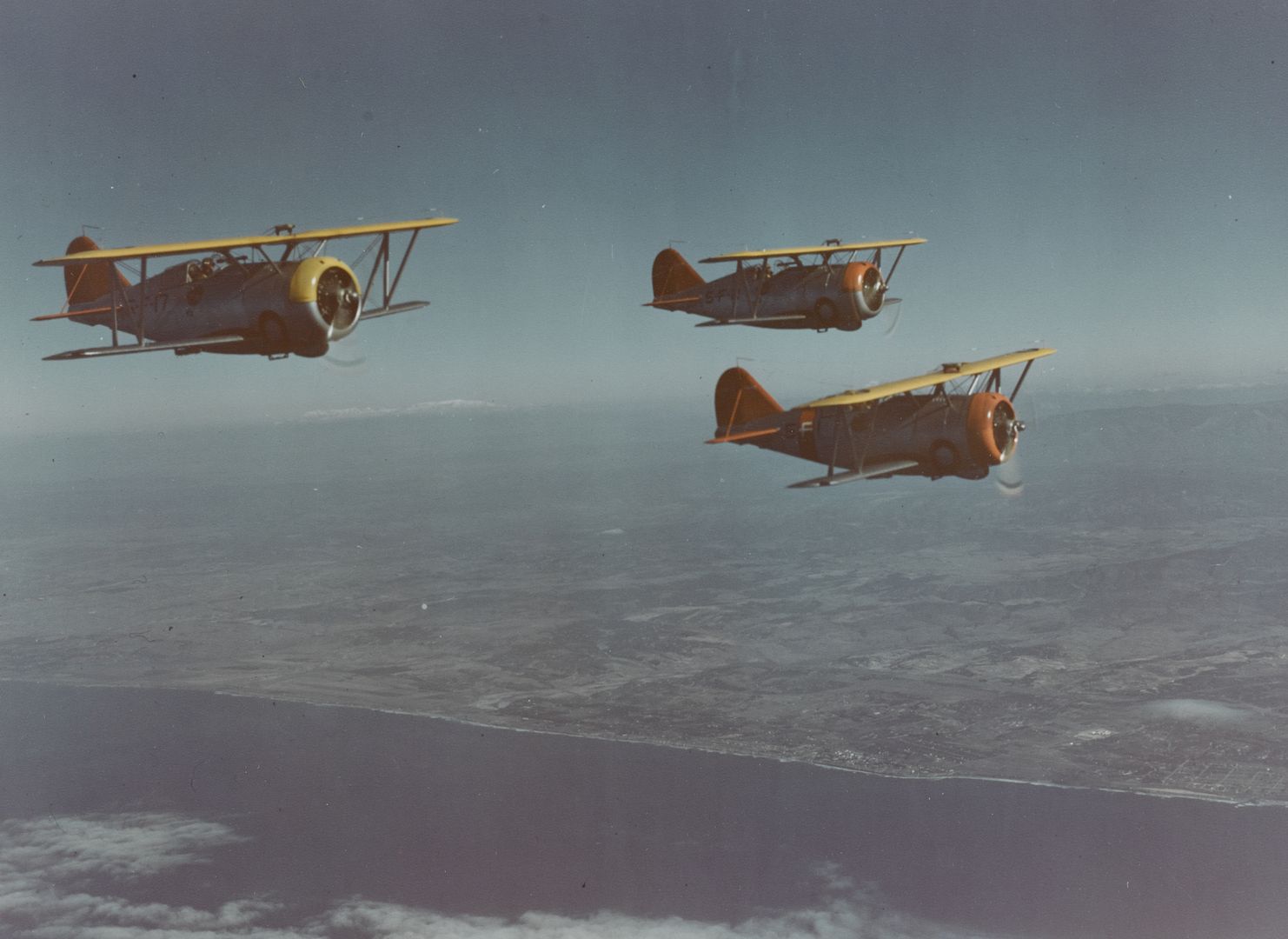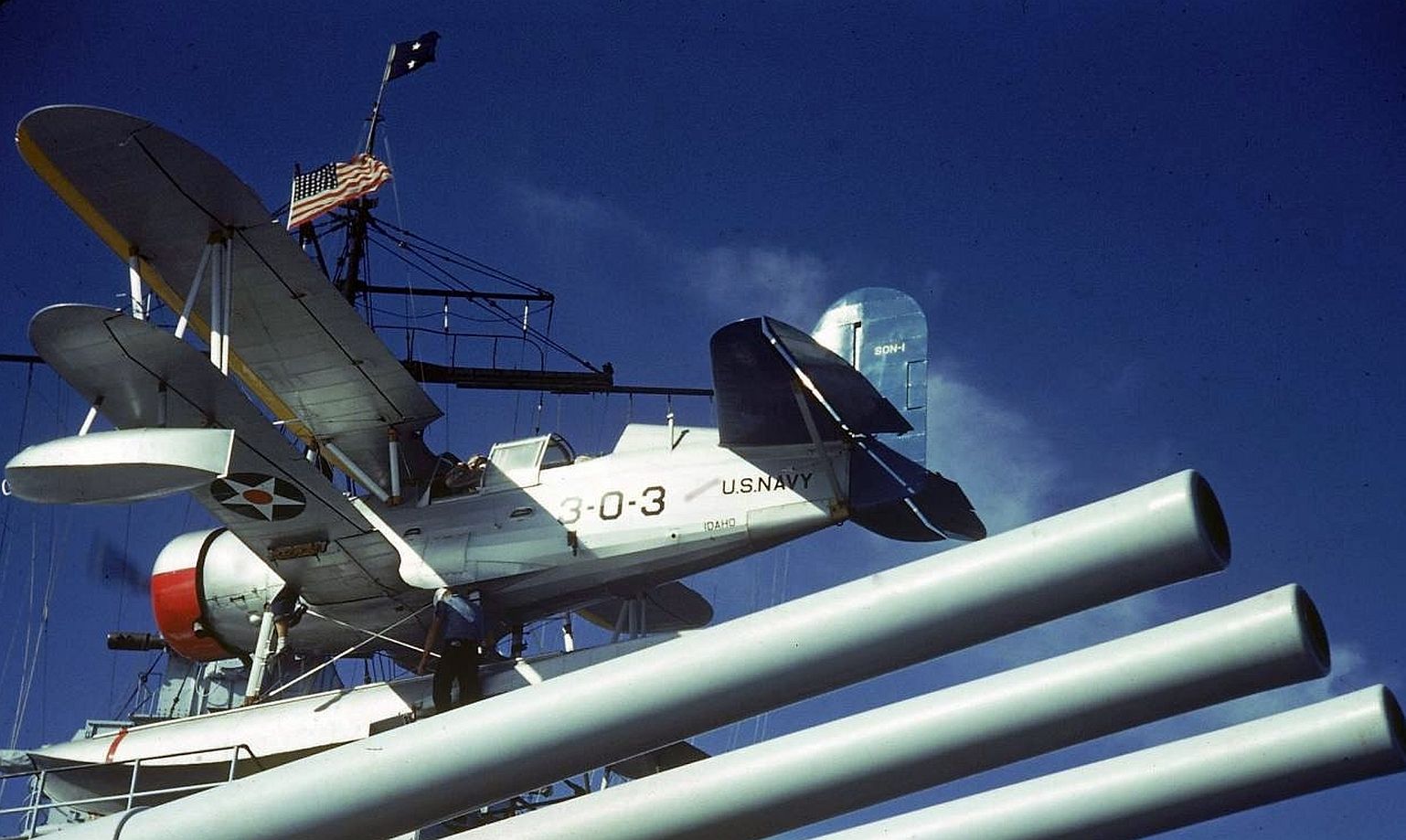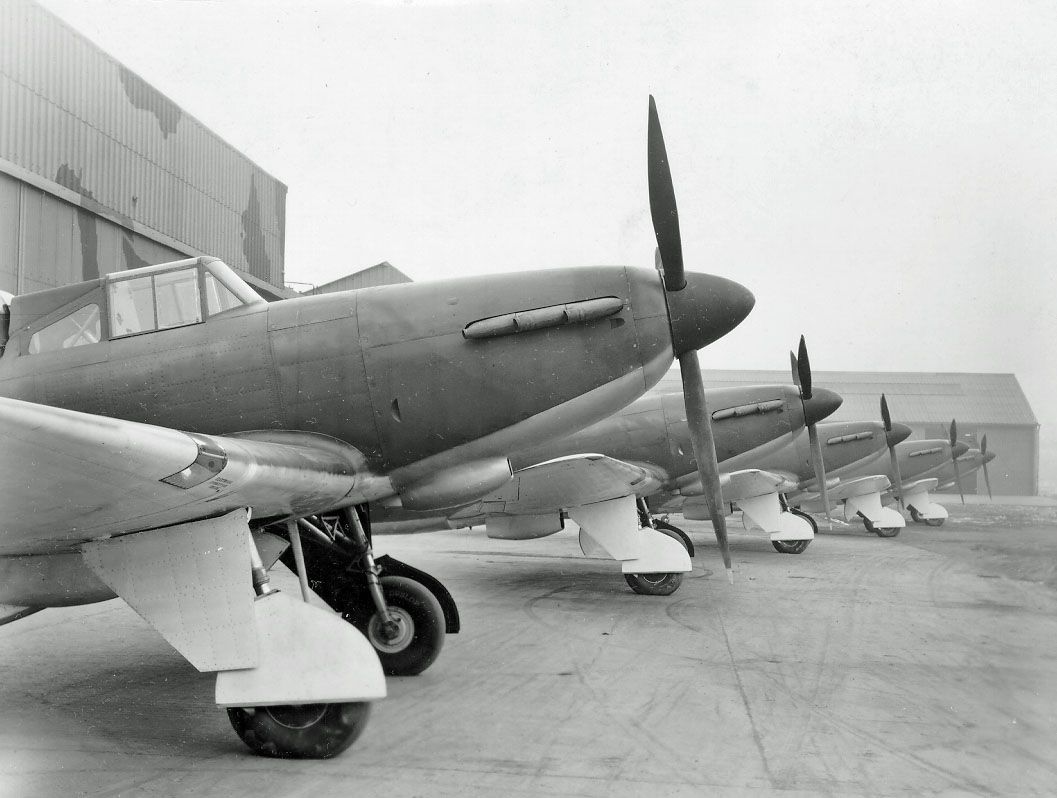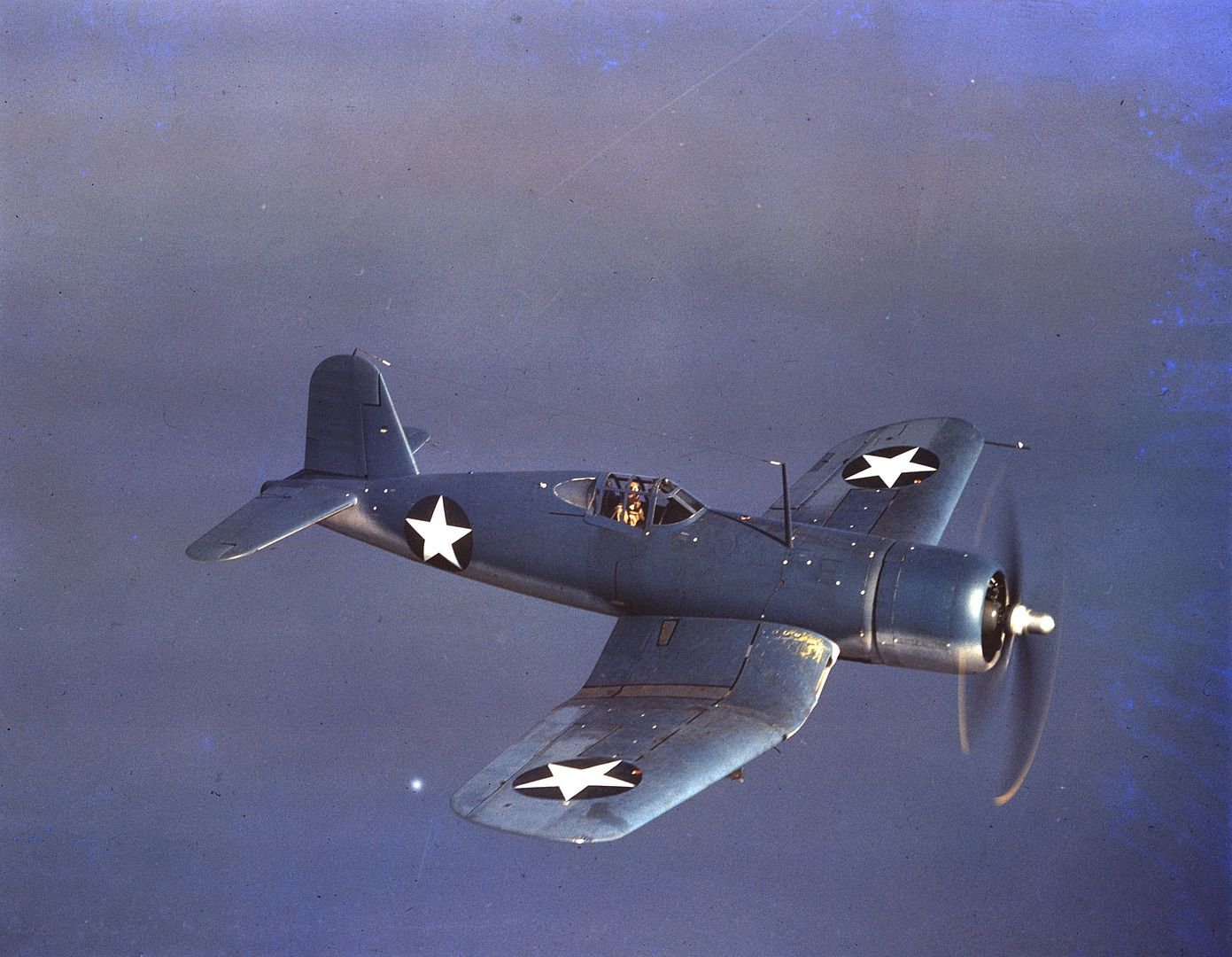Forums
- Forums
- Axis And Allies Forum
- General Discussion
- Photo of the week
Photo of the week
Post a reply
- Go to Previous topic
- Go to Next topic
- Go to Welcome
- Go to Introduce Yourself
- Go to General Discussion
- Go to Screenshots, Images and Videos
- Go to Off topic
- Go to Works in Progress
- Go to Skinning Tips / Tutorials
- Go to Skin Requests
- Go to IJAAF Library
- Go to Luftwaffe Library
- Go to RAF Library
- Go to USAAF / USN Library
- Go to Misc Library
- Go to The Ops Room
- Go to Made in Germany
- Go to Campaigns and Missions
- Go to Works in Progress
- Go to Juri's Air-Raid Shelter
- Go to Campaigns and Missions
- Go to Works in Progress
- Go to Skinpacks
- Go to External Projects Discussion
- Go to Books & Resources
-
 Main Admin
Main Admin -
 Main Admin
Main Admin -
8 years agoFri Mar 10 2017, 11:44pm
 Main AdminThis weeks photo's.
Main AdminThis weeks photo's.
Two of the first RN F-4 - YF-4K XT595 on its first flight, 27th June 1966.
The F-4K, the RN's carrier variant, needed to be made compatible with the RN's carriers, which were rather undersized in comparison with their US counterparts. The entire nose radome needed to fold 180 degrees in order to fit the aircraft onto the deck lifts; the nose leg needed to be extendable so that the aircraft could sit with the nose much higher at take-off in order to reduce the amount of wind needed over the deck at launch. Larger flaps, drooping ailerons and slatted tailplanes were also required to improve take-off performance. Thankfully some of these additions were already being introduced in the F-4J. The RAF, however, would have been quite happy with a standard F-4 and looked upon all the additions - including Speys - as being completely unnecessary, and using up valuable time and money that could have been used to finance a larger purchase.
On paper, using Speys looked like a great idea, as they were more powerful than the J79s fitted normally, and more fuel-efficient. However, it would not be an easy match. The engine bays needed to be enlarged, and the rear fuselage redesigned to cope with the slight exhaust down-angle needed to further improve take-off performance. Speys required a greater flow of air so the intakes had to be enlarged and even then auxiliary intake doors had to be introduced on the fuselage just forward of the tail. All of this work took so much money and time that the supposed off-the-shelf cheap buy was turning into a protracted and expensive procurement. The benefits of greater thrust and fuel economy were also practically negated by the higher drag caused by the enlarged fuselage. Acceleration at low altitude was improved; however at high altitude the F-4J performed better. Happily for the pilots of UK F-4s, the Speys were significantly less smoky than the J79s, so a British F-4 was at least trickier to acquire visually!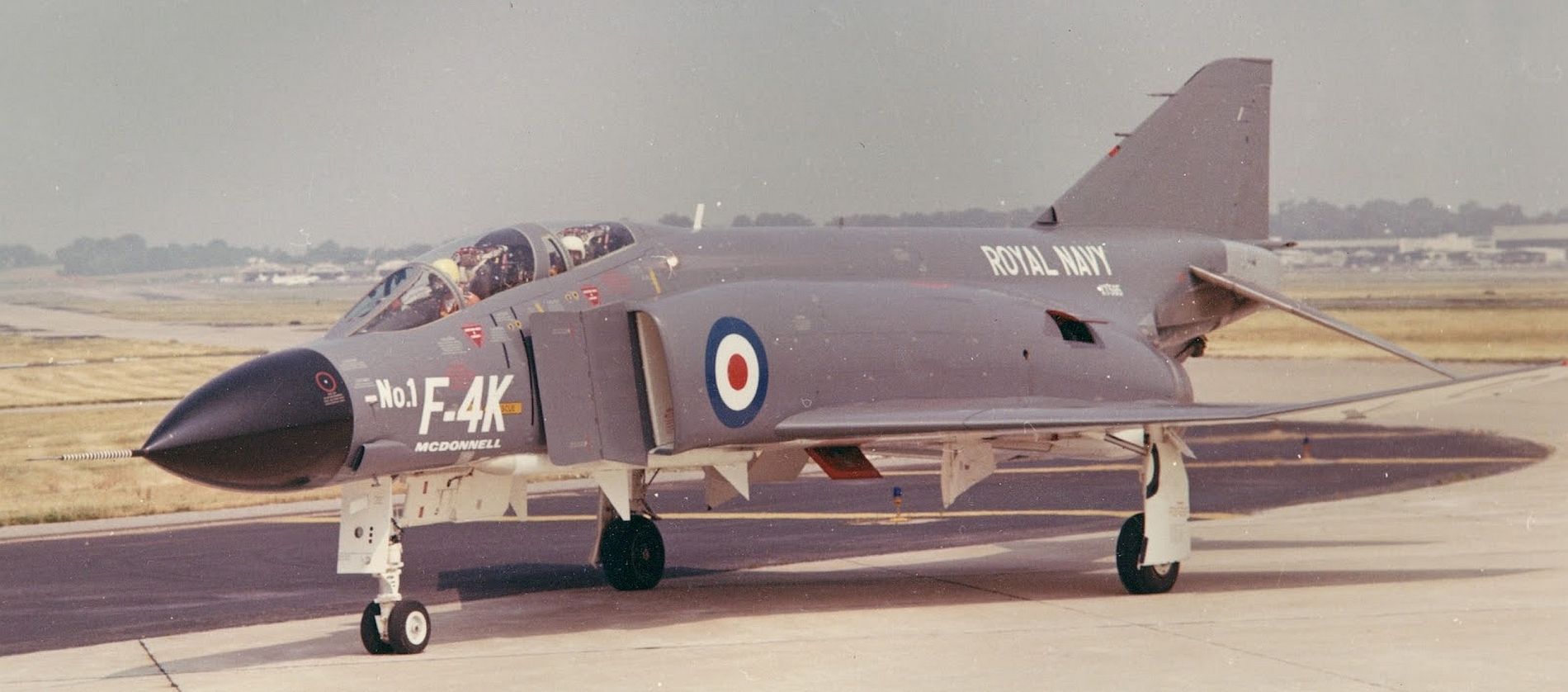
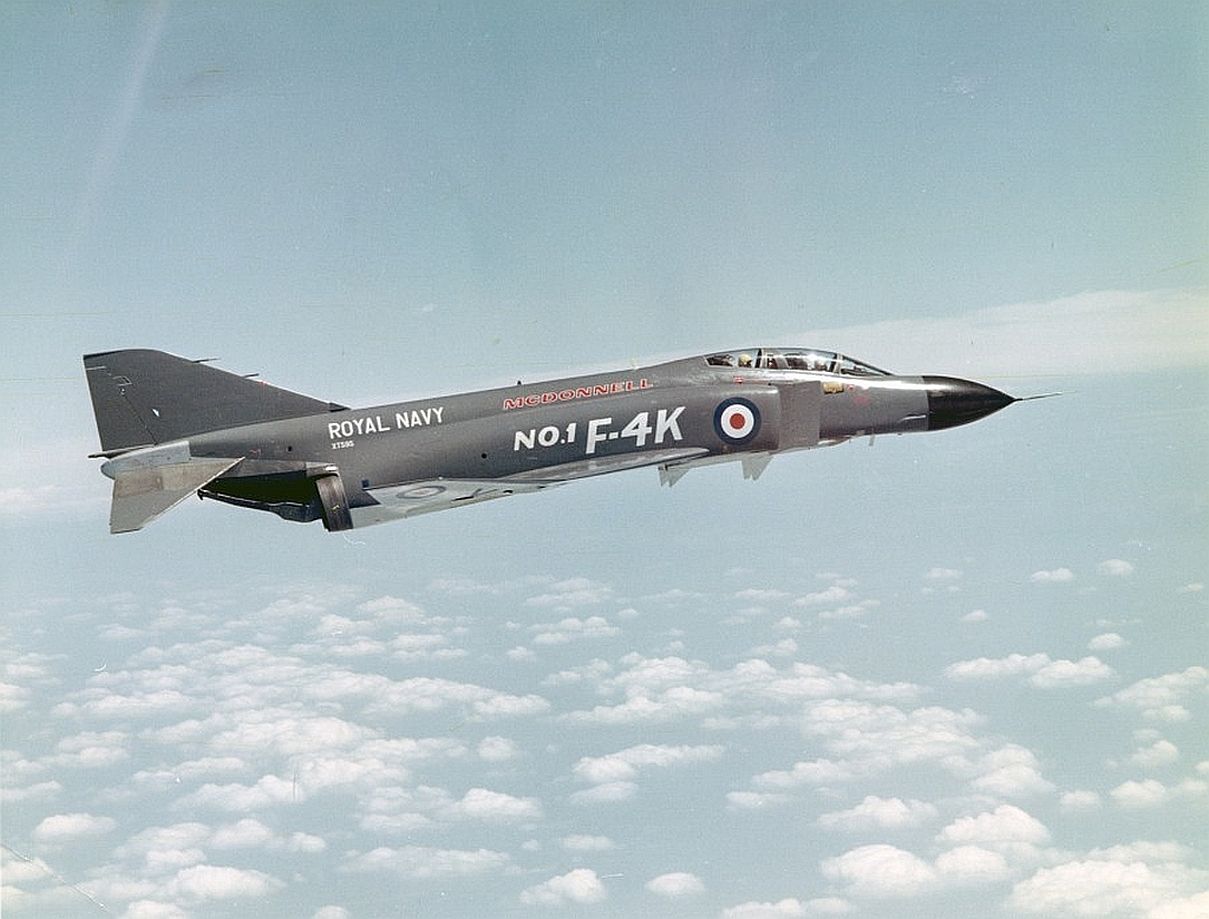
-
 Main AdminWeekend extra, & staying with jets.
Main AdminWeekend extra, & staying with jets.
Two-seater trainer (BUNO 143710) serving with the Naval Test Pilot School, Patuxent River, Maryland, circa late 1968. This unique model was originally an F8U-1 (F-8A) which was first converted to the prototype F8U-2NE (F-8E) and then modified to this trainer configuration. Fitted with a dual cockpit, it had two of its four 20-millimeter cannon removed. It first flew on 6 February 1962 as the YF8U-1T and on 18 September 1962 was re-designated YTF-8A. In this photograph, it wears the standard Navy light gray-and-white color scheme with international orange on nose and vertical tail to indicate its trainer status. Jet intake warning stripes, customarily red, are white here to contrast with the orange background. The upper gun pairing, seen here below the cockpit, was simply capped over when its gun was removed. The Test Pilot School insignia, a stylized plane, view of an F4D Skyray fighter, appears on the tail, 5 December 1968.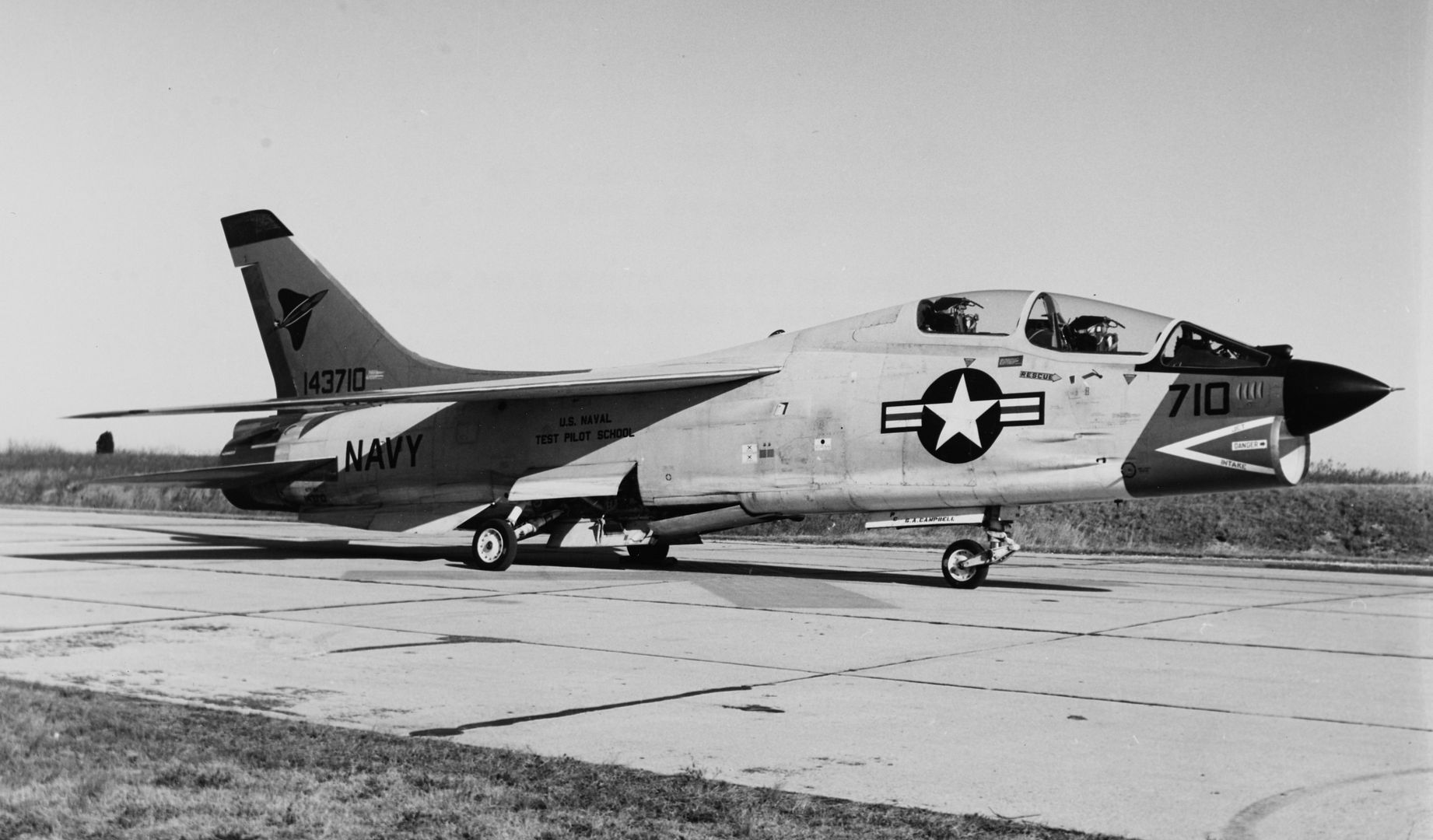
-
 Main Admin
Main Admin -
 Main Admin
Main Admin -
 Main AdminWeekend extra, and staying with USN biplanes.
Main AdminWeekend extra, and staying with USN biplanes.
A Great Lakes TG-1 torpedo plane. Parked near the old Municipal Airport hangar at Naval Air Station, Traverse City, Michigan on 30 November 1942. This plane, somewhat modified from normal TG-1 standards, was used for attack drone trials. It carries a large television guidance camera under its port lower wing, and still has torpedo release gear under its fuselage.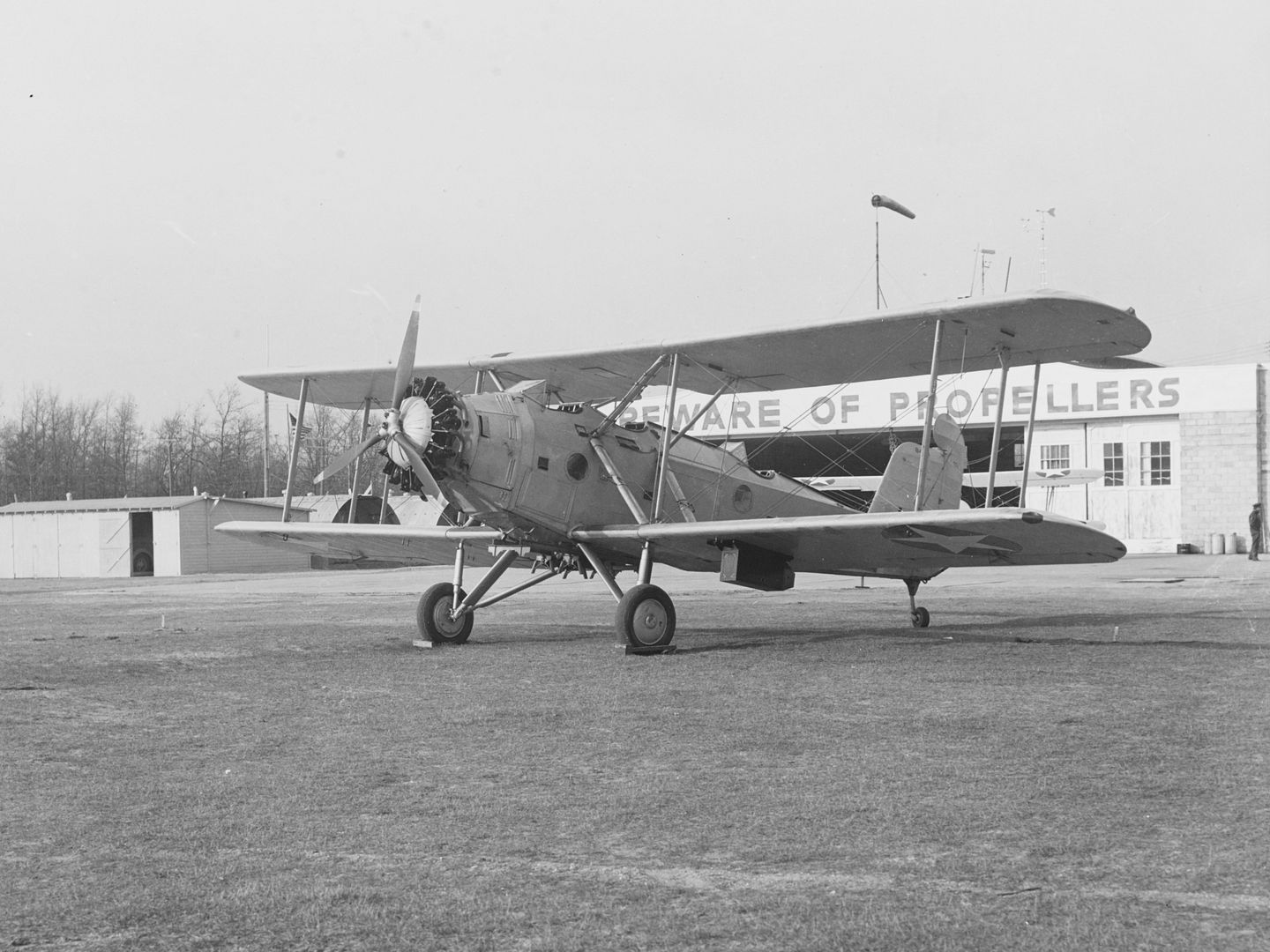
-
 Main AdminAs I had never heard of a TG-1 being used as a drone, I did a little more research, and found this photo from Otay Mesa.Dated 6th of May 1940.
Main AdminAs I had never heard of a TG-1 being used as a drone, I did a little more research, and found this photo from Otay Mesa.Dated 6th of May 1940.
Great Lakes TG-1-radio control set-up for drone control practice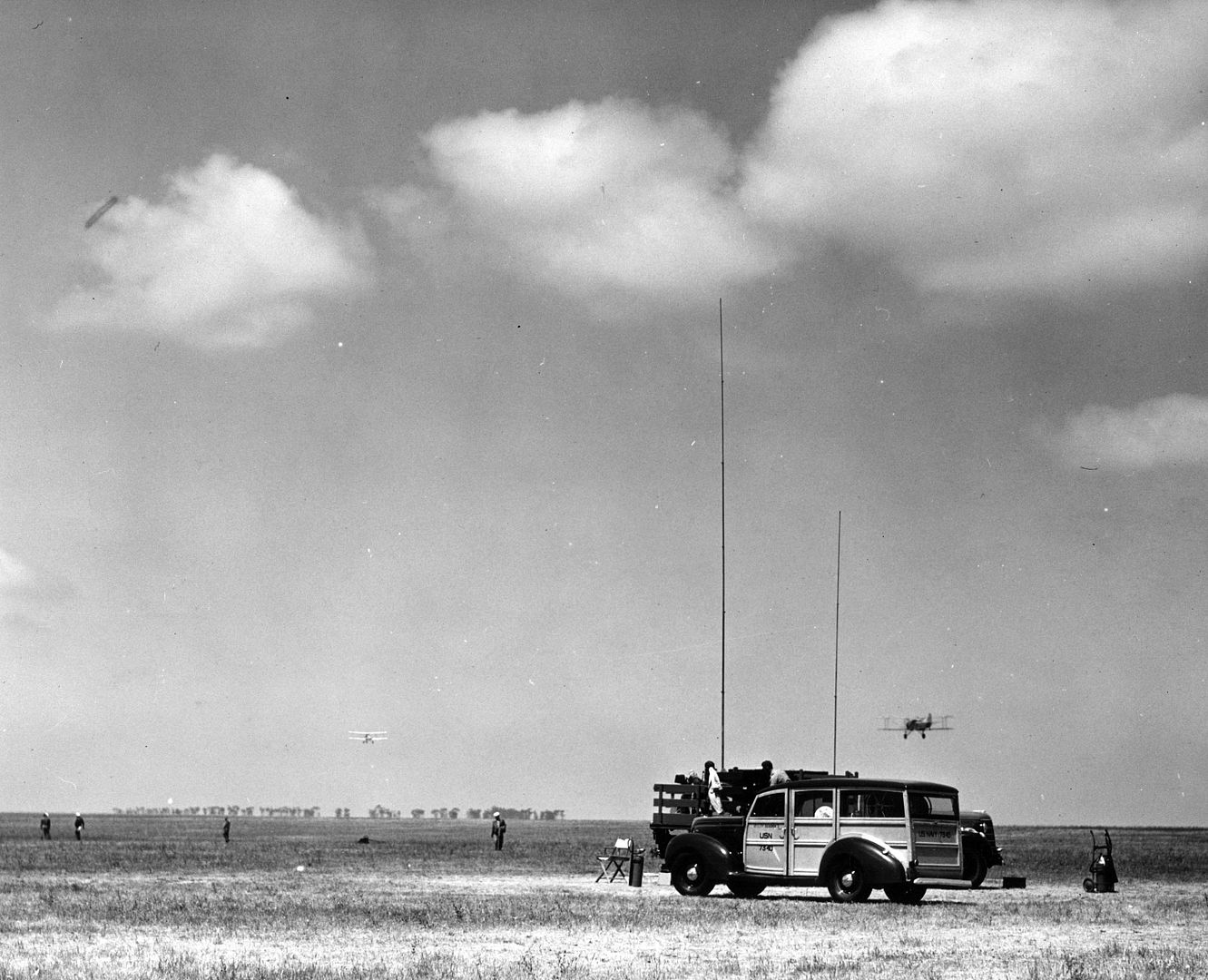
I guess Wikki needs to be updated as it states the aircraft was "used for utility duties at shore bases until June 1941" -
 Main Admin
Main Admin -
8 years agoFri Mar 24 2017, 11:07am
 Main Admin
Main Admin
Post a reply
- Go to Previous topic
- Go to Next topic
- Go to Welcome
- Go to Introduce Yourself
- Go to General Discussion
- Go to Screenshots, Images and Videos
- Go to Off topic
- Go to Works in Progress
- Go to Skinning Tips / Tutorials
- Go to Skin Requests
- Go to IJAAF Library
- Go to Luftwaffe Library
- Go to RAF Library
- Go to USAAF / USN Library
- Go to Misc Library
- Go to The Ops Room
- Go to Made in Germany
- Go to Campaigns and Missions
- Go to Works in Progress
- Go to Juri's Air-Raid Shelter
- Go to Campaigns and Missions
- Go to Works in Progress
- Go to Skinpacks
- Go to External Projects Discussion
- Go to Books & Resources

